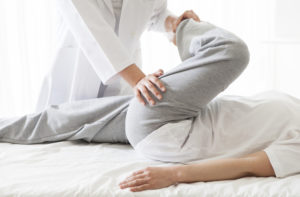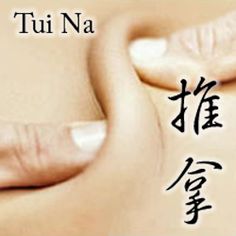Acupressure
Acupressure
Acupressure includes a category of medical massage techniques similar in principle to acupuncture. It is based on the concept of life energy which flows through “meridians” in the body. In treatment, physical pressure is applied to acupuncture points with the aim of clearing blockages in these meridians. My specific approach to acupressure focuses on Tui Na massage.
What is Tui Na?
 The term Tui Na (pronounced “twee naw”), which literally means “push and pull,” refers to a wide range of Traditional Chinese Medicine (TCM) therapeutic massage and body work.
The term Tui Na (pronounced “twee naw”), which literally means “push and pull,” refers to a wide range of Traditional Chinese Medicine (TCM) therapeutic massage and body work.
Tui Na is considered “medical massage” because it is not generally used just for pleasure and relaxation, but rather as a treatment to address specific patterns of disharmony. As such, practitioners use it for many of the same reasons and according to the same principles as acupuncture. Like acupuncture, TCM uses Tui Na to harmonize yin and yang in the body by manipulating the Qi in the acupuncture channels.
When is Tui Na used?
Tui Na is one of the most popular TCM treatment modalities and is frequently used in the treatment of superficial trauma and injury and a wide variety of musculoskeletal problems. Tui Na is also often used when someone does not want acupuncture or when acupuncture isn’t appropriate, such as with children or with someone who is seriously averse to needles.
I often have patients begin at my clinic by receiving Tui Na medical massage, and as they get pain relief and see their body changing, they then become interested in receiving the benefits of acupuncture as well.
I frequently encourage and train patients to use my simple self-massage techniques, apply topical liniments or herbs, and to do certain exercises at home to restore strength and balance to the channels or body pathways.
Here are some conditions Tui Na massage can treat:
- neck and back pain

- musculoskeletal disorders
- premenstrual syndrome
- fatigue and insomnia
- carpal tunnel
- headaches
- arthritis
- osteoporosis
- stress
- digestive conditions
- respiratory conditions
How Does Tui Na Work?
Tui Na works based on the theory that imbalances in the body can cause blockages that lead to symptoms such as pain and illness. Qi that’s flowing incorrectly can cause blockages, such as poor blood circulation in the affected area.
Using many of the same principles of acupuncture, Tui Na massage stimulates the flow of qi or energy along the body’s pathways called “channels”. This promotes balance and harmony within the body leading to better health.
“Can Tui Na Benefit Me Even If I’m Not in Pain?”
Absolutely. It is just as common for me to treat someone with Tui na massage to treat pain and illness, as it is to maintain good health. The technique is effective in reducing stress, encouraging relaxation, and deepening sleep. It’s often used for conditions and injuries related to the musculoskeletal and nervous systems.
My Training
I have been practicing some form of massage since childhood, intuitively discovering how to release the multitude of pains and injuries my father incurred doing construction work as a General Contractor. Mind you, I wasn’t aware of the powerful part that early experience would play in my later life. So, I was surprised during a casual conversation with my mother at age 22 to hear myself say “I really want to study massage.”
My formal massage training spans a minimum of 20 years, when I began studying the art of Shiatsu Japanese massage in 2001 at the Santa Barbara College of Oriental Medicine. I used Shiatsu as my primary clinical massage tool for over 12 years. In 2003 I completed my 600 hour Massage Therapy training at Santa Barbara Bodyworks. I earned the nickname “healing hands” as I formed my unique blend of Shiatsu with my additional training in deep tissue and sports massage.
 The next phase of my clinical training began specializes in a form of Chinese medical acupressure called Tui Na. Beginning in 2010, I began a 5-year apprenticeship with the amazing Master Liu, a Qi Gong and Tui Na master, when his extensive 50 years as a clinician lead him to focus solely on teaching. Training with Master Lui significantly changed the way I view and touch the body. He taught me that the body has 4 primary layers, the skin, the muscle, the tendon and the bone layers.
The next phase of my clinical training began specializes in a form of Chinese medical acupressure called Tui Na. Beginning in 2010, I began a 5-year apprenticeship with the amazing Master Liu, a Qi Gong and Tui Na master, when his extensive 50 years as a clinician lead him to focus solely on teaching. Training with Master Lui significantly changed the way I view and touch the body. He taught me that the body has 4 primary layers, the skin, the muscle, the tendon and the bone layers.
Master Liu’s view of Tui Na Medical Massage:
“Much of disease stays at one layer, but if you only work on the muscle layer like most massage, and don’t address the skin or tendinous layers for example, the problem will never resolve. Tui Na is for finding the right layer and releasing it. Then the person will finally get better.”